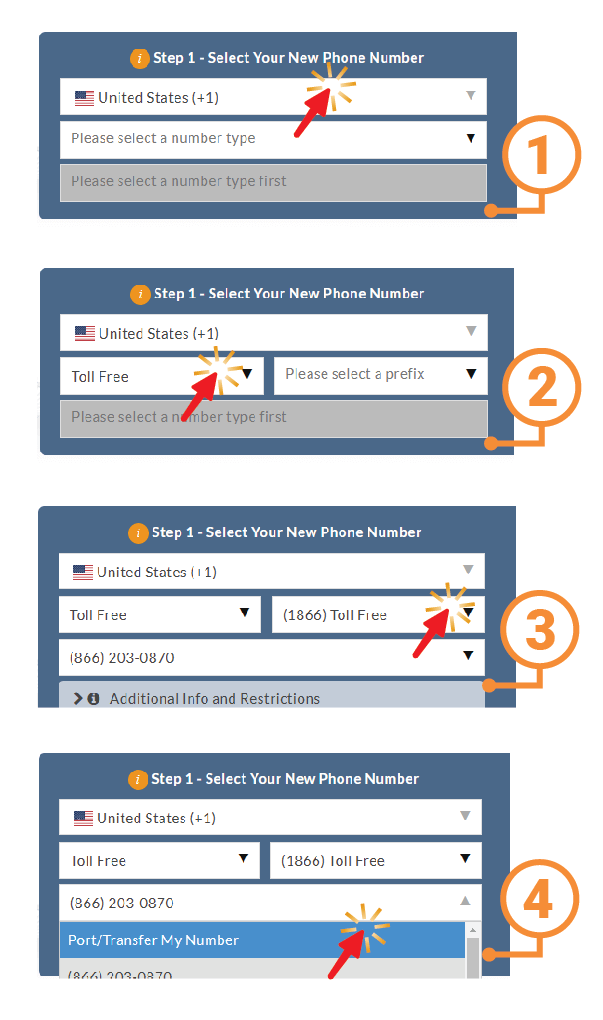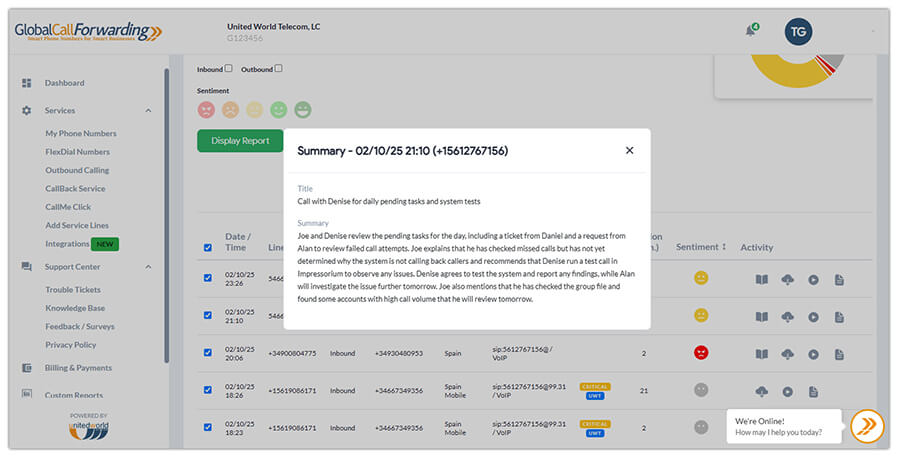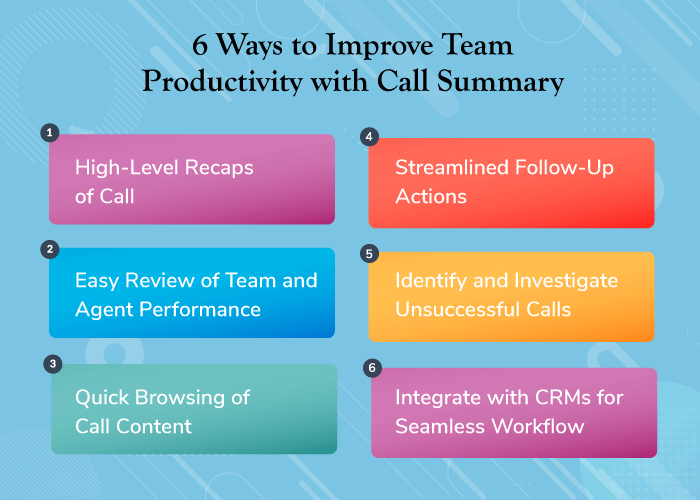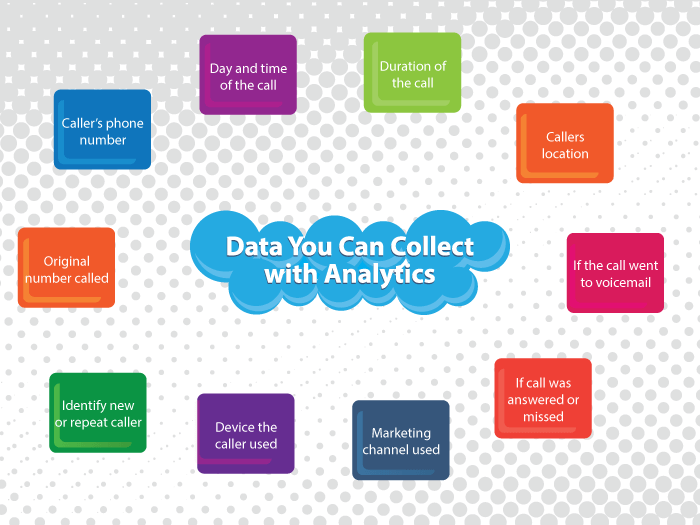VoIP and cloud telephony have become staple tools for global business communication. Its ability to deliver voice calls over the internet has changed how we stay connected—both in businesses and personal lives. Now, artificial intelligence (AI) is taking VoIP communication to unprecedented heights.
Some experts believe that by 2025, nearly 95% of customer interactions will be powered by generative AI. Imagine virtual assistants handling customer inquiries with unmatched efficiency or AI sales teams creating opportunities, freeing up human agents for more complex tasks. This underscores AI’s growing influence in shaping communication experiences.
With that in mind, let’s explore the latest AI in VoIP trends and see how AI is creating richer, more personal, and automated conversations. We’ll cover:
- What it means to integrate AI with VoIP
- Benefits and challenges of combining both technologies
- 5 new AI in VoIP trends
Integrating AI with VoIP
By leveraging AI subfields like machine learning (ML), natural language processing (NLP), Large Language Model (LLM), AI empowers VoIP platforms to understand, respond, and predict user needs with unprecedented accuracy.
ML and NLP can enhance the core functions of cloud telephony solutions, making customer interactions more intuitive and personalized. On the other hand, LLMs process and generate human-like text based on vast amounts of language data. This is used to generate transcriptions, translations, tone analysis, and the like.
For instance, thanks to AI, IVR systems can become more than mere automated menus. With ML, one can develop intelligent conversational agents and systems that can analyze past interactions to anticipate customer needs and route calls to the appropriate department or even offer automated solutions based on similar inquiries.
Similarly, integrating AI into your call analytics and reporting can open up room for more insights and data. Imagine, you can easily tap into your previous calls and get insights like:
- What are the points you need to clarify in your manual, FAQ, webpages to reduce customer complaints by 20%
- What are the real reasons behind each churn and what is the best route to retain the customer
- Based on the previous successful sales calls, what is the best sales pitch for a specific service or product
- What features should I add to my existing product based on customers’ actual demand, etc.
Benefits of Combining AI and VoIP
From efficient call routing and detailed call insights, to sentiment analysis, AI enhances the capabilities of VoIP solutions, helping businesses better optimize their call traffic. Some of the core benefits of integrating AI and VoIP include:
- Data-driven call insights and prompt-driven analysis
- Personalized customer experiences and interactions
- Efficient call routing and handling
- Improved call quality and noise reduction
- Increased accessibility and understanding of call traffic (transcriptions, translations, etc)
- Automation of routine tasks
- Enhanced VoIP security and fraud detection, and more.
Potential Challenges
Adopting AI in VoIP solutions comes with a range of challenges and limitations. One of the most significant hurdles is regulatory compliance. Data protection regulations, such as the General Data Protection Regulation (GDPR) in Europe, establish specific requirements for collecting and processing personal data.
Organizations using AI in VoIP must comply with these regulations. Similar challenges arise in regions like the US with regulations such as the FCC’s robocalling compliance. Businesses must ensure that AI-driven calls adhere to all robocalling regulations, including obtaining explicit, written consent from customers before making AI-generated calls. Ensuring ongoing compliance can prove resource-intensive and may require continuous updates to the AI systems.
Technical limitations present another challenge. Integrating AI with existing VoIP infrastructure could be complex, requiring advanced technical expertise and significant modifications to the current VoIP system, including costly upgrades.
Finally, user resistance can slow down the adoption process. Employees and agents may resist adopting AI-driven VoIP solutions due to the lack of trust, fearing job displacement, or being intimidated by the complexity of the technology. Businesses may have to organize additional training and implement change management strategies.

AI in VoIP: 5 New Technologies (w/Expert Opinions)
Even with those challenges, there are many benefits of using AI in VoIP for any growing business. To help this cause, cloud telephony providers have researched, built, experimented, and tested different AI functionality to improve caller experience while maintaining essential compliance.
We reached out to experts in the field to get a better idea of how AI and VoIP are combining forces to improve business communication.
Here are 5 trends of AI in VoIP that we’re seeing:
- Enhanced Call Handling
- Voice Transcription and Translation
- Advanced Call Insights and Analytics
- AI Chatbots for Customer Interaction
- Improved Call Quality, Security, and Fraud Detection
1. Enhanced Call Handling
VoIP service providers have long offered advanced call forwarding and routing options like IVR and ACD. These features enable businesses to automate their call handling processes based on predefined rules. And they efficiently manage high call volumes by directing callers to the appropriate department or agent.
According to Stefan Chekanov, co-founder and CEO of Brosix, “AI can identify patterns in call volume, keywords used by customers, and even the time of day calls are received. This way, it can match a caller with the most qualified agent. Employing ML, the VoIP system can assess the nature of the call, its urgency, and determine whether it needs to be immediately assigned to a specific agent or queued for later handling.”
Such AI-powered pattern identification can anticipate customer needs and route calls to the most suitable agents, streamlining workflows and boosting customer satisfaction.
AI’s predictive analytics can also help with improving staffing and call handling. According to Vikas Kaushik, CEO, TechAhead, “Predictive analytics can also foresee spikes in call volume and modify personnel levels appropriately. Businesses may improve their operational efficiency and provide a more individualized and responsive service by utilizing intelligent call routing.”
Further, AI can expand on VoIP and CRM capabilities by integrating and organizing customer data from various sources (support tickets, past conversations) into a unified profile, creating a comprehensive customer view. This enables CRM systems to handle customer inquiries more effectively and consistently.
2. Voice Transcription and Translation
AI has added more functionality to call management features like call recording and voicemail by enabling transcription and translation capabilities. With the integration of AI, these audio messages can now be transcribed into text and even translated into multiple languages.
For example, voicemail and call transcription and translation services from Global Call Forwarding utilizes AI and machine learning to ensure over 90% accuracy in detecting, transcribing, and translating more than 55 different languages and accents. These include French, German, Hindi, Arabic, Spanish, and more.
These features allow users to read, download, and share calls, recordings, and voicemails as text messages. They’re incredibly useful for businesses dealing with a global audience or those that need to keep accurate records of their communications. Think about customer support teams that need to keep track of every detail or legal and healthcare professionals who rely on precise documentation.
3. Advanced Call Insights and Analytics
VoIP providers are already offering a range of call analytics tools like call reports, recordings, transcriptions, etc. These tools have proven invaluable for businesses looking to gain insights into customer behavior, preferences, and call performance.
AI opens a whole new world of call insights with sub features like sentiment analysis, quick summaries, and prompt-driven analysis. For instance, sentiment analysis—real-time or post-call—analyzes speech and text data to understand the emotional tone of interactions.
Edward Tian, CEO, GPTZero, explains that “AI technology can assess the overall sentiment of the customer and the conversation (e.g. if the customer seems irritated, if the conversation seems to be going in circles with the customer not giving in, etc.). Then with those assessments, AI can then suggest ways for the representative to direct the conversation to get a better result, even going so far as to tell them exactly what to say.”
4. AI Chatbots for Customer Interaction
AI chatbots powered by conversational AI and generative AI technologies are becoming increasingly important for businesses looking to streamline communication and enhance customer service.
Think of them as virtual assistants that can chat with customers through various platforms like websites, social media, and messaging apps. They’re great at handling everyday tasks, like making appointments, sending feedback forms, and answering queries with specificity and accuracy.
For instance, a simple chatbot might be able to answer basic questions about a product or service. But a chatbot using conversational or generative AI can understand the context of a customer’s query, like why an order was canceled. It can then dig deeper to find the answer and provide a helpful explanation. And if things escalate, it can hand over the conversation to a human agent seamlessly. This is because AI chatbots too learn from each interaction, thanks to ML, NLP, and LLM, and provide increasingly specific, accurate, and helpful responses.
One of the best parts about combining these chatbots with VoIP systems is the ability to offer multichannel communication through a unified interface. Also, businesses can facilitate customer service automation.
5. Improved Call Quality, Security, and Fraud Detection
Leveraging a combination of sophisticated algorithms and machine learning techniques, AI can help significantly improve VoIP call quality. For instance, it can detect and remove background noises such as traffic sounds, ensuring clearer conversations even in busy environments.
As you know by now, AI algorithms are great at detecting patterns in data. In the context of VoIP calls, this means analyzing call data – frequency, duration, origin, and destination – to identify unusual activity. These algorithms are adept at spotting anomalies that might indicate telecom-related fraud. This could mean deviations from established patterns, such as sudden spikes in call volume or calls from unusual locations, can signal potential threats, etc. By identifying these anomalies, AI algorithms can flag suspicious activity for further investigation.
Bringing AI into Your Business Communications
With VoIP, businesses have a unique opportunity to improve the way they communicate and connect with customers. Global Call Forwarding offers advanced cloud telephony solutions that make it easier to direct and manage calls.
We also offer AI-powered call solutions like transcription and translation of voicemail and call recordings, sentiment analysis, short summary, and more. These features can help you capture the important and actionable insights from hundreds of hours of conversations, without missing a thing.
Tiago Godoi, CTO at Global Call Forwarding, shares, “Using your existing phone connections and daily human interactions, we can provide profound transformational value to your business. From basic sentiment analysis that can tell whether a call was handled smoothly or had some friction, up to creating an entire training material to optimize sales conversion in a few seconds.”
Ready to upgrade your business communication system? Speak to our experts and let us help you level up!




















